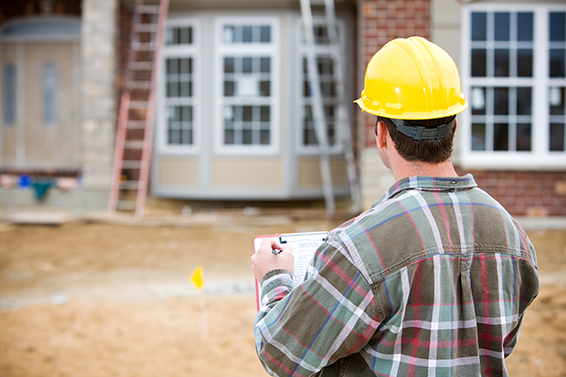A reserve study is a powerful tool that homeowners associations can use to ensure long-term financial health. Boards have a fiscal responsibility to their associations, and reserve studies play a significant role in fulfilling this responsibility. Yet, many remain unaware of the legal requirements involving reserve studies.
What is a Reserve Study for Communities?
A reserve study is a comprehensive analysis of an association’s common elements and assets, along with a thorough review of its reserves. It is essentially a planning tool for the long-term health of the reserve fund.
The reserve study analyzes the current condition and estimates the remaining useful life of the association’s assets. These may include roofs, sidewalks, tot-lots, pools, and more. From there, the study determines the cost of repairing or replacing these elements. A funding strategy ensures that the community has sufficient financial reserves to cover these costs at any given time.
Why is a Reserve Study Important?
A reserve study benefits associations in several ways. First, they support long-term financial planning. Boards can anticipate major expenses and financially prepare for them. With fewer surprises, associations can avoid special assessments and loans.
Second, a reserve study ensures that the reserve funds remain healthy for future residents. Existing residents regularly use the community’s facilities, resulting in wear and tear. The reserves will enable the association to fund major repairs and replacements, thereby maintaining these facilities in good condition.
Third, association boards have a fiduciary responsibility to prioritize the community’s interests. Assessing and prioritizing the association’s needs often involves conducting an HOA reserve study.
Finally, reserve studies bring peace of mind. Board members can rest more easily knowing that they have the necessary defenses in place to secure the association’s finances.
Are Reserve Studies Required in Virginia?
Many states require associations to conduct reserve studies regularly. In Virginia, two laws come to mind: the Virginia Property Owners Association Act and the Virginia Condominium Act.
Section 55.1-1826 of the Property Owners Association Act outlines the reserve study requirements for HOAs. This section requires associations to conduct a reserve study at least once every five years.
Section 55.1-1965 of the Condominium Act outlines the reserve study requirements for condo associations. This section requires condos to conduct a reserve study at least once every five years.
In states where the law is silent, associations must turn to their governing documents. The CC & Rs and bylaws should clarify whether a reserve study is required and how often the association must conduct it.
Parts of a Reserve Analysis
A homeowners association reserve study consists of three parts: the physical analysis, the financial analysis, and the report or funding plan. Let’s break these down below.
1. Physical Analysis
A professional reserve study begins with a detailed physical analysis of the community’s shared assets. This process begins by identifying each component for which the community is responsible, including roofs, siding, clubhouses, pools, courts, and landscaped areas. The goal is to compile a comprehensive list of all common elements that require ongoing maintenance or replacement.
After identifying the assets, each one undergoes a condition assessment. Using a mix of visual checks and non-destructive testing tools, the specialist evaluates signs of wear, aging, or damage.
The assessment takes into account the asset’s age, construction quality, and exposure to the elements. From there, the specialist estimates its remaining useful life. This is a prediction of how long it can continue functioning before it requires major repairs or full replacement.
Next comes cost forecasting. This involves estimating the future expense of repair or replacement for each item. Estimates use current labor and material costs along with projected inflation and any complexities specific to the property.
2. Financial Analysis
The study then transitions to a financial analysis. It starts with a review of the association’s current reserve fund. This includes the balance, how the money is managed or invested, and how much it has grown over time.
The specialist checks if the current reserve contributions align with the needs identified in the physical analysis. They will also examine past spending patterns to spot trends and determine whether future projections reflect the community’s financial behavior.
3. Funding Plan
All findings are organized in a final report. This report includes a detailed inventory of each common area asset, along with its current condition, expected remaining life, and projected cost.
It also offers funding strategy options. Each strategy is tailored to different levels of risk tolerance. This allows boards to select an approach that aligns with their financial objectives and community preferences.
Some reports go a step further by including maintenance planning. This plan recommends routine maintenance that can help extend the lifespan of key components. The goal is to help the association delay costly replacements when possible.
How Much Does an HOA Reserve Study Cost?
Reserve studies can cost anywhere between $500 and $10,000, depending on a few factors. These factors include the size of the association, the location, and the complexity of the shared elements.
It will also depend on the type of study the association needs. Some studies are more comprehensive than others, requiring a site visit. If it’s just an update of an existing study, the price is generally more affordable.
Condominiums also tend to pay a higher price for reserve studies. These communities share more common elements, resulting in a more comprehensive analysis.
Who Should Conduct a Reserve Study?
Although the association board can do a preliminary analysis, reserve studies should always be performed by an experienced professional. These studies involve numerous components, making them challenging to conduct without prior knowledge.
Communities should hire a Reserve Specialist certified by the Community Associations Institute. There are also qualified specialists in the Association of Professional Reserve Analysts.
That said, some management companies also provide reserve study services. These services can come in the form of in-house studies or connecting associations with pre-vetted specialists.
How Frequently Should a Community Have a Reserve Study?
Reserve studies should be conducted at least every five years. Ultimately, it depends on state laws and the association’s governing documents.
In Virginia, both HOAs and condo associations are required by law to perform one every five years. Other states may have different requirements.
Some associations’ governing documents are more stringent, requiring a study to be conducted every three years. Others require a complete reserve study every five years, with an update at the three-year mark or the end of each year.
A Defense Tool
A reserve study can be what keeps an association from financial ruin. Without this study, associations would have no way of knowing whether their reserve funds are at a healthy level.
National Realty Partners is a leading provider of HOA and condominium management services in Virginia. We help communities thrive. Call us today at 703-435-3800 or request a proposal online to get started!
RELATED ARTICLES:
- Are HOA Fees Tax Deductible? What You Should Know
- A Step-By-Step Guide To HOA Transition From Developer Control
- How Can HOA Insurance Protect Your Association?

